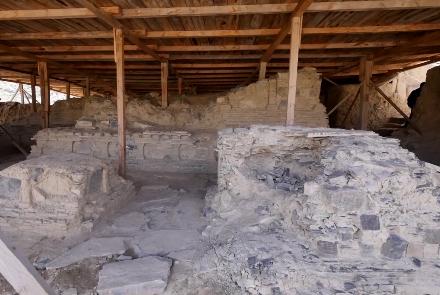An ancient metalworks township has been discovered in the Mes Aynak area in Logar province, 40 km southeast of Kabul, a region that contains Afghanistan’s largest copper deposit, as well as the remains of an ancient settlement with over 400 Buddha statues, stupas and a monastery complex.
The township that has been discovered belongs to the Buddhist era, dating back from between the 2nd and 7th century CE.
The archaeologists said the township also contains historical assets from the Bronze Age that date back to anywhere between 3,300 BCE to 1,200 BCE and their excavation has been completed by 60%.
11 years have passed since the archeologists initially started their work on the site. 135 historical sites so far have been identified in the area.
Over the last 11 years, archaeologists have discovered residential houses, temples, metal smelting furnaces, a water supply system, graves, preserved corpses and caves.
“Archeologists and researchers believe that the Mes Ainak area dates back to the Bronze Age,” said Noor Agha Noori, the head of an archeological team in the Ainak copper mine.
Archaeologists have said that more than 10,000 remnants of a Buddhist township have been recovered, 6,000 of which have been transferred to the National Museum. The National Museum organized a five-year exhibition in Kabul and an exhibition in the Czech Republic.
“The artifacts that we have included in the Czech exhibit show the repair and restoration of some of the assets,” said Fahim Rahimi, the head of the National Museum.
35 historical sites have been identified in Logar province. In the past, Afghan and foreign archeologists together undertook to investigate the sites, but in recent years only Afghan archeologists continue the work.

